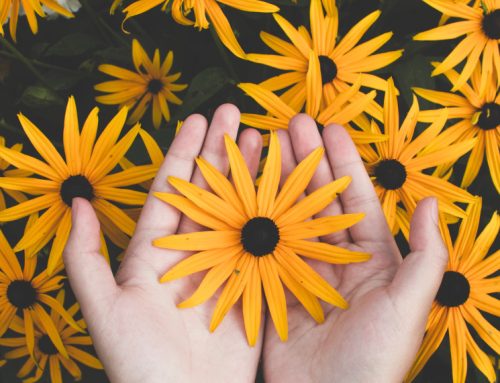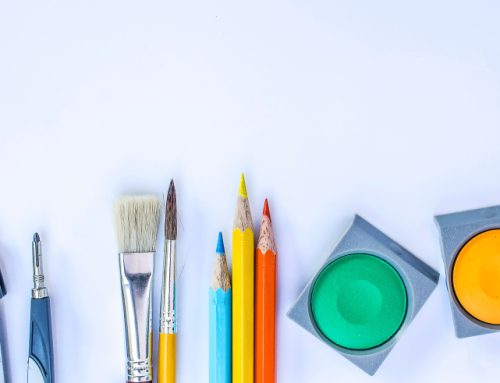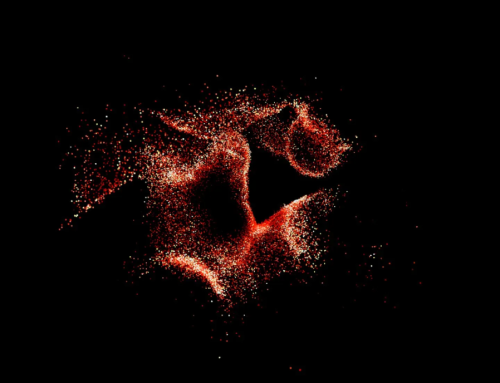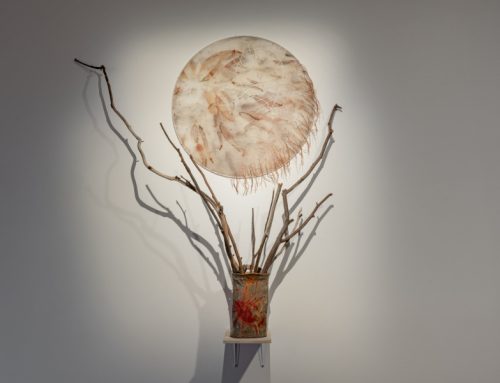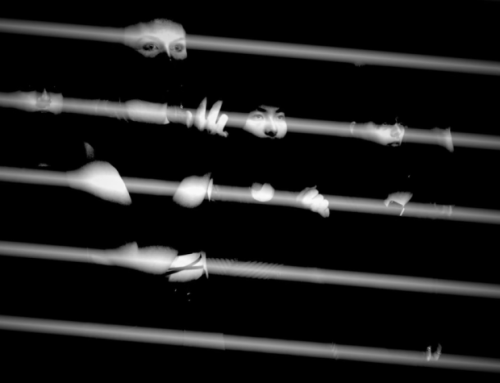“Sound healing has the capacity to intensify a series of felt experiences that tap into the deep recesses of the sub conscious mind and physiology of the body. When you cultivate a relaxed physical state, sound frequencies are felt on a deeper visceral level and a wonderful alchemy and embodiment then occurs”. So explains Mathew Bergan the power of sound healing as he prepares to deliver ‘A Trip to Limerence’ as part of the Sydney Gay and Lesbian Mardi Gras. Here, Matthew sheds some light on this transformative practice.

Sound Healing Workshop
Can you describe to us what role sound can play in the process of healing?
Interestingly the adult body is 70% water, which is the best conductor for sound vibration. It also has the capacity to vibrate faster than air molecules. When you listen and experience sound there is a greater chemistry going on with your physiology. More than you can possibly realise. When harmonious, pleasant vibrations travel through the body, they can decrease blood pressure and promote blood circulation through the relaxation of the muscles and arterial walls. This then stimulates the parasympathetic nervous system, which is responsible for bodies rest states including relaxation, digestion, sleep and rejuvenation.
Your blood, which is liquid, transports hormonal chemicals around the body. If you are stressed or anxious, chances are the body is producing excess cortisol and adrenaline. These hormones are necessary when navigating a complex environment such as riding a bicycle in peak hour traffic, however they don’t serve you when we are trying to relax, rest or sleep. Sound healing activates the destress responses in the parasympathetic nervous system promoting the distribution of calming hormones such as dopamine and serotonin, effectively lowering your breath rate, blood pressure, heart rate.
Trauma based therapeutic practices suggest that pleasant or unpleasant memories of the past often sit buried in the recesses of the mind as well as one’s own physiology. Music, voice, atmospheric sounds or sound frequencies can provide an opening for people to connect to these deeper recesses (if they choose to), and aid in the release of repressed trauma.
Music and sound, combined with physical relaxation trigger what is known as the hypnagogia state, which occurs during the transitional period of wakefulness to sleep, when alpha waves (the first stage of sleep) decrease but you haven’t yet reached sleep. During this period, your sense of “here” and “now” transitions from the present world towards the dream world. When this happens, people commonly experience visualisations, lucid dreaming, random sounds or physical tremors. This is how hypnotism has proven to be effective when used as a therapeutic practice to help people make positive changes in their lives.
During a sound healing session, I facilitate the journey using the tonality of my voice through what is called narrational therapy (storytelling). I shape the participants’ experience inside the hypnagogic state. I write healing stories that speak to the queer experience.
Firstly, I ask people to relax and then I speak directly to their parasympathetic nervous system taking them through a series of relaxational practices including breath work, mindfulness, and body scanning. Then using the magic of sound, music and song, I journey people towards new horizons. I speak to their imagination and build new worlds, create new social relations, and open people to new possibilities along a pathway towards what I call a ‘queer utopia’.
(Some of the world’s greatest and smartest minds used hypnagogia to tap into their creativity such as Thomas Edison, Edgar Allan Poe, and Salvador Dali).
What is the different relationship between music healing and sound healing?
I don’t think the ear really knows the difference between the two. Music is sound, sound is music. I also don’t think one can exist without the other. They both arrive at the same place ie. the cultivation of contentment, self-acceptance and joy.
The sound healing tradition arose out of Tibetan healing bowl ceremonies in Tibetan Buddhist temples alongside Gong and Crystal bowl sound baths. Some of these practices are ancient, others have gained popularity across the West over the past 20 years, especially inside the yoga community.
I know music therapy is a method which takes therapeutic advantage of the healing qualities of music. Studies have proven certain music is known to reduce insomnia, as well as pain levels in chronic pain sufferers. Over the years, sound healing and music therapy have been used to treat several conditions including anxiety and depression, post-traumatic stress disorder, dementia and autism.
Sound healing sessions are sometimes called sound baths or immersions which literally suggest been dipped inside a resonating bath. Sound healing is more aligned with the chakra system that arose out of Indian Tantric practices and philosophy. Each chakra is said to have a specific resonant tone that can be affected by sound.
How is sound healing experienced?
Sound healing is best experienced as a horizontal meditation lying down on a comfortable surface like a mattress or couch, while resting on your spine – what we call the corpse pose in yoga. I simply ask people to rest, close their eyes and listen, it’s as simple as that.
On that note, deep listening, the art of concentrating upon an aural experience has sadly been lost due to sight now often being perceived as the dominant sense. I ask people to return to the art of listening, similar to aboriginal songline which passes down cultural practices and beliefs through story, song and the power of imagination. I also describe my sessions like a radio play, where one listens to the telling of a story supported by a rich soundscape.

Sound Healing Facilitator, Mathew Bergan
What benefits can one achieve from sound healing?
I don’t think I have ever met somebody that says they hate music like they might hate asparagus or frozen yogurt! Almost everyone can recall a piece of music or a song that profoundly teleports them back in time to a certain place, experience, or situation.
There has been a lot of research into music therapy over the years that proves that music can heal and create greater states of contentment.
Certain sound frequencies such as 432 hertz (the frequency of happiness as some call it), is said to stimulate the heart chakra, the seat of empathy, love, joy and intimacy. Other frequencies are known to target other chakra zones. Whether or not you believe in the chakra system doesn’t really matter, as there is always a wonderful outcome for the participants that I can’t really explain. Almost like people are high on sound or something similar.
I believe everyone can relate to music, and when you wind the clock back to folkloric times or consider indigenous songlines, there are always songs or chants that evoke cultural practices and a deeper place of belonging. Dive even deeper and there is the beat of the sacred drum. For queers, it’s dancefloor culture and the evolution of tea dances, disco, house and electronica.
For me, I provide the music example of the 1980’s Bronski Beats song, ‘Small Town Boy’. Every time I hear this song I’m teleported to a specific time in my life where deep visceral feelings and emotions get stirred, that still to this day shake me to tears. These tears are bitter/sweet memories when as a young gay boy there was a toxic and self-harming juncture in my life. This song was a catalyst for me to come out of the closet and move into the larger world with a sense of confidence and purpose.
Music to this day still teaches me radical self-acceptance. If I am feeling down or blue, I’ll select a piece of music that’s uplifting that promotes the distribution of the body’s happy hormones such as serotonin and dopamine. I love creating playlists that meet certain shades of my emotional self including my: disco mix, get-your-sexy-on mix, blues and R & B mix, work out mix, or world music to transport me to faraway places.
Can you describe the sound healing workshops you deliver?
My sound healing sessions use electronic music instead of pan pipes, gongs, crystal bowls etc. I like deep electronic sounds that can be massaged and turned into an electronic bed of juxtaposing sounds. There are endless possibilities in the electronic realm that allow for greater experimentation. I like to disturb the familiar and instead push the genre into new territory and give it a queer flavour.
I am presenting a sound healing session in this year’s Mardi Gras Festival titled, ‘A Trip to Limerence. I’m not perfect, but I’m perfect for me.’
This piece is narrated by Paul Capsis. It’s about the bodies hormonal state called Limerence, which happens when you first fall in love with someone. This is like a bonding chemical exchange where you only see one another in a perfect state of perfection, (sometimes blindly), when you are high on pheromones, where the other person can do no wrong and your rose-tinted glasses smooth over all the little imperfections. Limerence can last up to two years apparently. My curiosity suggests, if this state exists, surely then it is possible to trick the brain and harness these chemicals and pheromones, and instead practice self-love and radical self-acceptance upon oneself, without needing another to substantiate this.

DJs Jonny Seymour and Paul Mac aka Stereogamous
How is sound healing being used within the context of Queer health?
I work with the DJs Jonny Seymour and Paul Mac who are music engineers, scholars, sound artists and walking libraries of music intelligence and operate under the banner Stereogamous. Between them both they bring a wealth of knowledge to the many music/sound choices that become part of the overall experience.
My intentions also go deeper. I am a 57 year-old gay male that lived and experienced the HIV/AIDS epidemic in both London and Australia. I must have attended thirty or more funerals before my 30th birthday. As a bar man working at the Oxford Hotel in Oxford street, Sydney in 1989, I served drinks to beautiful gay men who were at this stage dying of AIDS. They would leave the hospice at St Vincent’s Hospital in Darlinghurst, and hang out at the bar until closing at 1.00pm. On a quiet Monday night some of these men told me stories of how their families had abandoned them for been queer and HIV positive. These were horrible times. I was 22 years of age and way out of my depth to hold space for this level of trauma. I tried my best to listen to their stories, their grief, their spiritual catharsis, however nothing as a young adult could prepare me for this. At the time all you could do was suck it up, this was the new normal.
To this day I feel I owe these young gay men and the women that supported us the recognition they deserve. Not to mention the close friends I lost at this time. In some way I am processing my own trauma and PTSD through my writing and using sound healing as a vehicle to heal myself and others who may have similar experiences.
I write stories that address the intergenerational trauma the LBGTQI+ community faces as a result of the loss of so many beautiful men and women. This may sound heavy as subject matter to experience inside a sound healing session, but surprisingly it works, there is a beautiful recognition of our “queerness” and the differences we hold that define our own survival needs.
Inside a healing session I teach radical self-acceptance, queer mindfulness, self-love and queer determination. I remind people that they have a deeper purpose in life, that their difference is their ultimate superpower. Queer culture has a history of pushing boundaries and disrupting the status quo. I am cheeky, I am camp, and I like the non-normative space where I can create my own universe and share a healing with others.

‘A Trip to Limerence: I’m not perfect, but I’m perfect for me’, image supplied
Mathew Bergan is the founder of Dancing Warrior Yoga school in Newtown, Sydney. He has a background in contemporary dance, choreography, sports massage, writing and film-making. He has been teaching Hatha yoga since 1993 and practices his own form of urban Spiritualism. He has studied somatic counselling is presently completed his post-graduation in Gestalt therapy. Mathew teaches yoga from Union Street Yoga, Erskineville, Sydney.
His next Queer Sound Healing is presented in the 2022 Mardi Gras festival titled: A Trip To Limerence, I’m not perfect, but I’m perfect for me.

